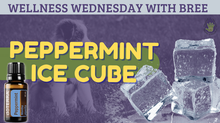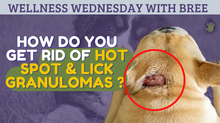Does Your Dog Need Rattlesnake Avoidance Training?
TRAINING TUESDAY!
Today I bring to you the "hot topic" of Rattlesnake Avoidance Training. I want to share the in's and out's of what it really is and why you are the one that makes the ultimate choice for your furry friend.
I will be very honest with you, in the positive dog training community, I have been in serious hot water with other trainers for even offering this training.
Let me explain why.....Rattlesnake Avoidance Training is punishment based, which is not directly in line with how we train. Without getting all sciency on you let me break it down.
The dog wears an electric collar (no, they are not shock collars), when the dog engages in one of 4 stations (baby snake, rattle rock, shed skin, adult snake) there is a correction made. The point is to create a startle response. This does not mean turning the collar all the way up scaring the holy heck out of the dog. That is actually NOT what we want. When a dog is scared beyond thinking, training does not occur. We want the dog to be aware of his/her surroundings and to associate the "bite" to the snake. The goal is to create a dog that does not want to engage in the snake. Why is this so important? We want the dog to have this response even when YOU ARE NOT AROUND. When your dog has to make the choice without help, we want to bank our odds that they will make the right choice. This is what aversion training can accomplish.
This is where having an exceptional trainer comes into play. If the timing of the "bite" is not correct, there is a risk that the dog will associate the correction with the handler or other objects around them. This exact problem is what made me seek out an exceptional trainer, I was having to "fix" to many dogs that had associated the correction wrong. Honestly it is a very sad thing to see, hence why all trainers are not created equal!
There are many trainers out there offering rattlesnake avoidance training, if you are considering this for your dog, make sure to ask some of these simple questions.
1. What is used to keep my dog safe from the snake? The answer to this should be special clear skin tape put on as a muzzle for the snake. It should not be a cone on the snakes head, a wire or glass cage (we don't find these in nature).
2. What type of setting will the training be held? The answer should be in an outdoor area, similar to where your dog would encounter a snake. It should not be at an indoor facility, near busy roads ect.
3. What type of snakes are used? This sounds crazy right??? Guess what, not all trainers use rattlesnakes. You must have a special license/permit to have possession of a venomous snake. You may ask, why is it important? All snakes smell differently, and move differently, if the trainer you are using is not using a rattlesnake, then they are teaching your dog to avoid whatever variety of snake they have.
4. Are different size rattlesnakes used in training? Again, super important. Our dogs do not always generalize when it comes to size. A little baby is very different than an adult snake, it is important that our dogs know to avoid all sizes of rattlesnakes.
If you want to learn more about rattlesnake training, to include information on our upcoming September 8th clinic, information on the specialty trainers I bring in just for our events, and answers to commonly asked questions. I invite you to check out the Rattlesnake Avoidance page on our website.
With all this said, the bottom line is this....YOU have the choice for what is best for your dog. This type of training will not be for everyone, and that is perfectly fine...again, it is your choice. BUT for those of us that do feel the value, as well as the peace of mind that comes with having the training done, then now is the time to do your homework!





















